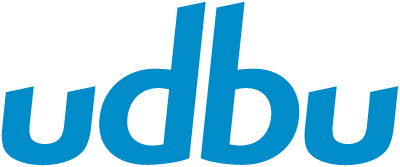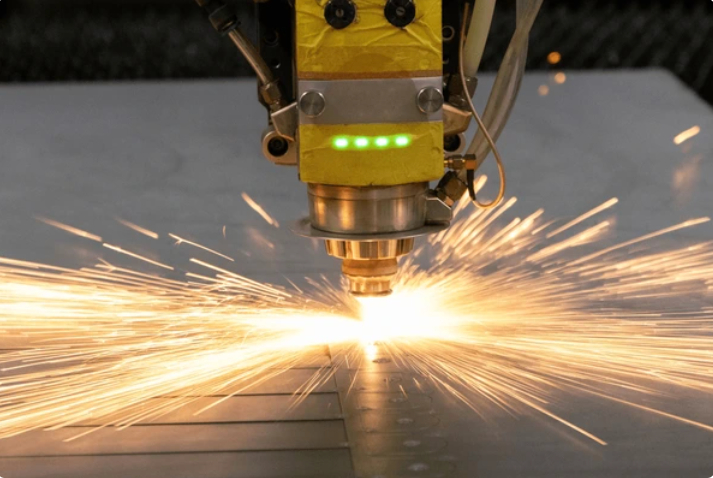Reducing Downtime in Laser Cutting: A Path to Enhanced Productivity
Reducing Downtime in Laser Cutting: A Path to Enhanced Productivity
In the competitive world of manufacturing, downtime can be one of the most costly and disruptive factors. For industries reliant on precision machining—like aerospace, automotive, and metal fabrication—the need for efficient processes is critical. One area where downtime can severely impact productivity is in laser cutting.
Laser cutting is widely regarded for its precision and speed, but even the most advanced systems aren’t immune to downtime. Whether it's due to maintenance issues, setup inefficiencies, or unanticipated machine malfunctions, reducing downtime in laser cutting operations can significantly improve output, quality, and bottom-line performance. So, how do you minimize downtime and maximize the potential of your laser cutting machines?
In this blog, we'll explore several strategies and best practices for reducing downtime in laser cutting.
1. Regular Preventive Maintenance
One of the most effective ways to minimize unplanned downtime is through regular preventive maintenance (PM). Laser cutting machines are complex, and components like laser heads, optics, and nozzles can wear over time. Setting up a consistent maintenance schedule that includes:
- Cleaning and replacing optics: Regular cleaning and replacement of the cutting head and lenses ensures optimal beam quality and cutting performance.
- Checking cooling systems: Overheating can damage critical components, so it's important to inspect the cooling system and replace any worn-out parts.
- Lubricating moving parts: Keeping the drive system and gantry lubricated reduces friction and minimizes wear.
By taking proactive care of your equipment, you can avoid many common failures that lead to machine downtime.
2. Optimizing Machine Settings for Efficiency
Another way to reduce downtime is to ensure your laser cutting machines are operating at peak efficiency. Poor machine settings often lead to prolonged cutting times, unnecessary tool wear, and wasted energy. Optimization includes:
- Material-specific settings: Each material requires different laser power, speed, and assist gas parameters. For instance, cutting through stainless steel may require different settings compared to cutting through mild steel. Make sure your machine settings are optimized for each material type.
- Cutting path optimization: When designing the cutting paths, reducing the number of rapid moves and optimizing the order of cuts can minimize unnecessary delays.
- Automated setting adjustments: Many modern laser cutters allow for automatic adjustments based on material thickness and type, reducing the need for manual calibration.
By refining the machine settings, you can reduce the chances of errors or slowdowns during production.
3. Invest in Advanced Automation
Automation is a game-changer when it comes to laser cutting efficiency. From material handling to part unloading, automated systems can drastically reduce the amount of manual intervention required during the process. Some areas where automation can help:
- Automatic loading/unloading systems: These systems help load raw material onto the cutting table and unload finished parts, reducing manual labor and wait times between cuts.
- Automated material storage: Automated storage solutions ensure that materials are always readily available, reducing the time spent searching for the right material.
- Part sorting and separation: After cutting, automated sorting systems can help quickly separate finished parts from scrap, reducing downtime between cuts and improving workflow.
By reducing the need for human intervention, automation speeds up the entire production cycle and cuts down on the risk of downtime due to human error.
4. Utilize Remote Diagnostics and Monitoring
Many modern laser cutting machines come equipped with remote diagnostics and monitoring capabilities. These features can provide operators with real-time feedback on machine health, allowing for faster troubleshooting and predictive maintenance. Key benefits include:
- Real-time alerts: The machine can send notifications about any potential issues (e.g., a cooling system failure or laser power fluctuation) before they escalate into bigger problems.
- Predictive analytics: By tracking patterns in machine performance, operators can predict when a part might fail or when maintenance is needed, avoiding unplanned downtime.
- Remote access: Technicians can remotely access the machine to troubleshoot issues, perform diagnostics, and in some cases, even fix software problems without being physically present on-site.
Having the ability to monitor and diagnose potential problems remotely can help keep machines running without unnecessary delays.
5. Training and Skill Development
A well-trained team can make all the difference when it comes to reducing downtime. Machine operators who understand the intricacies of laser cutting technology and can identify early warning signs of potential issues are less likely to cause delays. Focus on:
- Proper operation techniques: Train operators to properly adjust machine settings for specific materials, reducing the likelihood of setup errors and inefficient cuts.
- Troubleshooting skills: Equip operators with the knowledge to identify common machine faults and perform basic fixes, minimizing the need for external technicians.
- Ongoing training: Regularly update training programs to keep operators in the loop with the latest technology, machine upgrades, and best practices.
By investing in your team’s skillset, you empower them to work more efficiently, which ultimately reduces downtime.
6. Maximize Machine Utilization with Scheduling Software
One of the simplest ways to reduce downtime is by making sure the laser cutting machine is being used as efficiently as possible. Implementing advanced scheduling and job management software can optimize production schedules, ensuring that machines are running as much as possible. This software can help with:
- Batch processing: Grouping similar jobs together can reduce the time spent setting up the machine between cuts.
- Job prioritization: Scheduling high-priority jobs first and optimizing job run times can help prevent machine idling.
- Maintenance integration: Scheduling maintenance during non-production hours or in between shifts helps keep production flowing smoothly.
Better scheduling increases machine uptime, reduces idle time, and makes better use of available resources.
7. Minimize Material Waste and Optimize Yield
When laser cutting, material waste can be a significant source of inefficiency and downtime. By reducing material waste and optimizing the yield from your raw material, you can help prevent unplanned halts in production. Techniques for minimizing waste include:
- Nest optimization: Advanced nesting software ensures that parts are arranged in the most efficient way possible to maximize material usage.
- Scrap recycling systems: Systems designed to separate and recycle scrap metal ensure that valuable materials don’t go to waste, reducing downtime for material changeovers.
- Laser power management: Properly adjusting the laser's power based on material thickness and type reduces the likelihood of material burn or distortion, leading to fewer rejects.
More efficient material usage means fewer interruptions, and a leaner production process, contributing to less downtime.
Conclusion: The Path to Increased Productivity
Minimizing downtime in laser cutting is not just about having the latest technology; it’s about implementing the right combination of preventive maintenance, automation, efficient scheduling, and well-trained operators. With the right approach, your company can significantly reduce downtime, improve throughput, and boost overall profitability. The result? More cutting, less waiting.
By investing in the strategies discussed above, you not only keep your laser cutting machines running longer but also ensure that your operations remain competitive and cost-effective.
Would you like to dive deeper into any of these strategies or learn about specific equipment or software that can help optimize your laser cutting process? Let us know!

